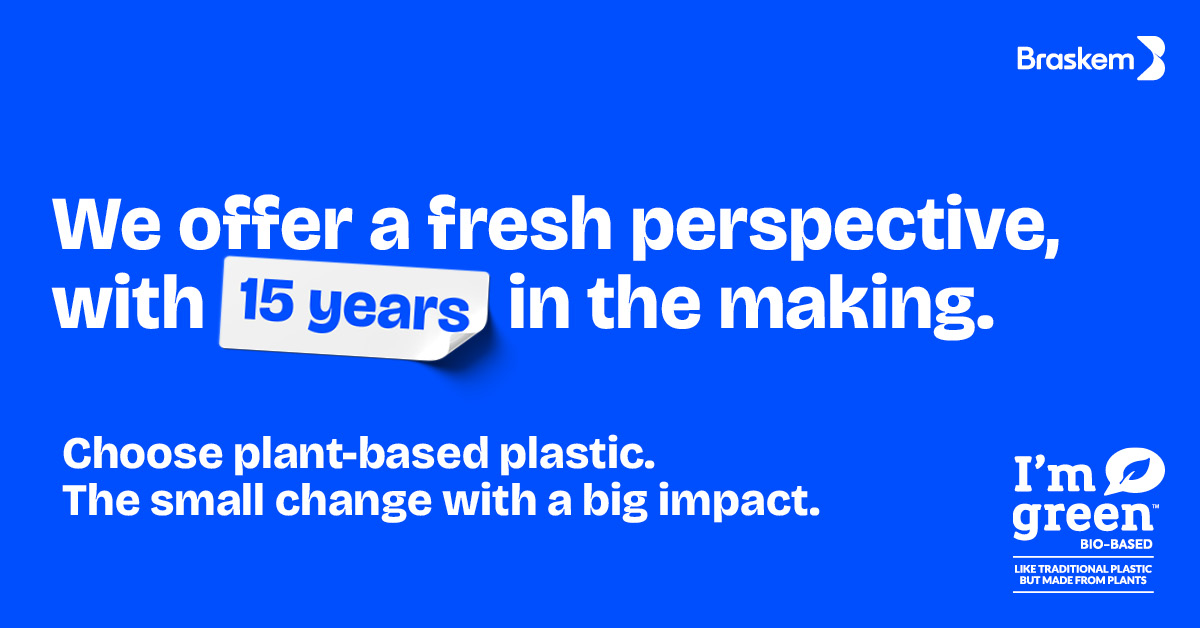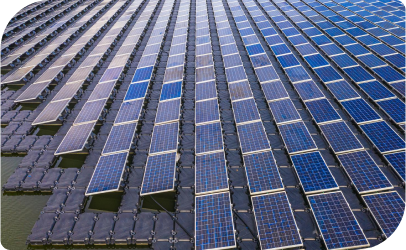Foz do Brasil and Sabesp inaugurate Brazil's largest water reuse project
Aquapolo, with the capacity to produce 1,000 liters per second of recycled water for industrial purposes using treated sewage as the input, will supply the Capuava Petrochemical Complex of Mauá, located in São Paulo's ABC region (Brazil)
The product will replace the drinking water previously used and increase the supply of drinking water for human consumption, thereby improving the security of water supply to the São Paulo Metropolitan Area.
On Thursday, November 29, Foz do Brasil and Sabesp will inaugurate the largest water reuse project in Brazil. Aquapolo Ambiental, which has the capacity to produce 1,000 liters per second of reuse water, will supply the Capuava Petrochemical Complex located in Mauá, in the ABC region of São Paulo. The volume is equivalent to the consumption of drinking water by 300,000 people, or a city the size of Guarujá.
The project will also make an important contribution to creating jobs in the ABC region. The supply of quality reuse water that is designed to meet industrial needs reduces costs and increases the useful life of equipment, which ensures the continued existence of the plants in the region and will make it possible to expand the plants and hire new employees. The petrochemical complex currently employs more than 25,000 people.
Aquapolo was created in 2010 by Foz do Brasil (the environmental solutions company of the Odebrecht Group) and Sabesp. A new company, Aquapolo Ambiental, was created for the project's installation. The investment of R$364 million in the facility now being inaugurated includes a station for producing reuse water for industrial purposes, a large-diameter pipeline measuring 17 km and 3.6 km of distribution networks.
The industrial reuse water is produced from treated sewage. This effluent, which would normally be disposed of in the environment in accordance with government regulations, undergoes further treatment using cutting-edge technology that includes ultrafiltration membranes and reverse osmosis. The installation of the project was made possible by Braskem, which will consume 65% of Aquapolo's capacity, or 650 liters per second. The supply of water to the company is guaranteed for 41 years.
Aquapolo's characteristics make it one of the most innovative projects in the country, given its combination of social and environmental responsibility with economic development. "The initiative proves that this partnership model involving the public and private sectors is an important way to address environmental and sewage issues in Brazil," said Fernando Reis, CEO of Foz do Brasil. The structure that will produce the reuse water was built on a site owned by the ABC Sewage Treatment Station of the São Paulo water utility Sabesp, which is located on the border between the municipalities of São Paulo and São Caetano do Sul. The pipeline passes through São Paulo, São Caetano do Sul and Santo André before reaching the complex in Mauá, where the water is distributed to manufacturers.
The initiative will allow Sabesp to increase its supply of drinking water to the São Paulo Metropolitan Area, since the volume of water currently used by the Petrochemical Complex will be replaced by the industrial reuse water. Each month the project will free up 450 million liters of treated water, or 175 Olympic-size swimming pools.
"Recycling water is a solution for the future. It makes an important contribution to guaranteeing water supply security in the São Paulo Metropolitan Area, where the supply of water is low," said Dilma Pena, Chief Executive Officer of Sabesp. Greater São Paulo has on average 140,000 liters of water per person per year, which is less than 10% of what the United Nations considers ideal.
To supply the region's population of 20 million, Sabesp invests in a number of initiatives other than water reuse projects. On November 8, a bidding process was launched for a new water production system known as São Lourenço. The estimated investment of R$1.68 billion will be made under a Public-Private Partnership (PPP) model and will benefit 1.5 million people.
Sabesp's strategy also includes promoting the rational use of water to prevent waste. Over the last ten years, these actions helped reduce average per-capita water consumption in Greater São Paulo by 14.3%. Another focus is on combating water losses. The investments through the end of this decade will come to R$1.9 billion and include an unprecedented US$440 million financing agreement signed this year with JICA, the development organization of the government of Japan, a country that is a world reference in this area.
Social, economic and environmental gains
By providing high-quality water for industrial purposes at competitive prices, Aquapolo will enable the Petrochemical Complex, which celebrated its 40th anniversary in 2012, to increase its competitiveness and the useful life of its equipment. "The greatest benefit is for the environment, but the companies will also benefit from operational and economic advantages," said Marcos Asseburg, director at Aquapolo Ambiental.
"The objectives and characteristics of Aquapolo are perfectly aligned with Braskem's sustainability strategy, which includes pursuing eco-efficiency in production with the lowest possible impact on the environment," said Jorge Soto, director of Sustainable Development at Braskem.
Cutting-edge technology
The input for producing the reuse water for industrial purposes is treated sewage. This effluent meets all standards stipulated in Resolutions 357 and 430 of Conama, an agency of the Ministry of the Environment. This means the effluent meets all quality standards for being discharged into bodies of water. For industrial use, the effluent undergoes further treatment using state-of-the-art technology. First, it is captured and pumped through disk filters, where the initial filtration occurs. Then it goes to the Tertiary Membrane Bioreactor (TMBR), which performs tertiary treatment using ultrafiltration membranes that retain solid particles and even bacteria. The next step is reverse osmosis, which reduces the water's salinity and removes other elements, rendering the product suitable for industrial use.
International recognition
Even before its operations began, Aquapolo had already received international recognition. In April 2011, the project placed second in the Global WaterAwards, which recognizes innovative initiatives in water supply and sewage. The project was selected from among 40 projects worldwide by water utility executives in various countries and representatives from industry entities. The project was also one of the three finalists of the ANA 2012 Awards in the Companies category granted by the National Water Agency to successful initiatives in the intelligent use of natural resources.
40th anniversary of the ABC Petrochemical Complex
The ABC Petrochemical Complex was inaugurated in 1972. However, the story of the first petrochemical complex in the country dates back to 1954, when the then National Oil Board launched a public bidding process for refinery concessions. This led to the creation of the company Refinaria e Exploração de Petróleo União S.A., which was located in Capuava, in the municipality of Mauá, São Paulo. In 1964, one of its main shareholders proposed the installation of a petrochemical center on a site nearby the refinery. In 1969, construction began on Petroquímica União (PQU), which was inaugurated in 1972, marking the start of operations at the ABC Petrochemical Complex. Today the complex employees over 25,000 people.
About Foz do Brasil
Foz do Brasil, the environmental solutions company of the Odebrecht Organization, is present in 18 Brazilian states and benefits more than 8.3 million people. It operates services in cities that have become benchmarks in sanitation, such as Limeira in the inland region of the state of São Paulo, as well as concessions in various states of Brazil, such as Santa Catarina, Rio de Janeiro, Tocantins and Rio Grande do Sul. The company is also a partner to various state basic sanitation utilities, such as Sabesp and Copasa. For more information on Foz do Brasil go to www.fozdobrasil.com.br.
About Sabesp
Sabesp supplies quality water, sewage collection and treatment to 27.6 million people in 363 cities in the state of São Paulo. It is also equipped to provide drainage, urban cleaning, solid waste handling and energy services. The State of São Paulo is the majority shareholder, with 50.3% of the capital. The shares representing the remaining capital are traded on the Novo Mercado segment of the BM&FBovespa (SBSP3) and on the New York Stock Exchange (SBS).
Santos, one of the cities served by the company, has, for the second year, placed first in the national sanitation ranking of Instituto Trata Brasil. São Paulo, which has a population of 11 million, figures among the top 20 cities in the same ranking. Sabesp's goal is for all cities it serves to reach 300% by the end of the decade, i.e. universal access to water and sewage services.
This goal will be reached by 2014 for the state's inland region and by 2016 for its coastal region. In the São Paulo Metropolitan Area, the goal will be reached by the end of the decade. To achieve these goals, the company has been investing R$2 billion annually. Today, 146 cities have already achieved universal access. For more information go to www.sabesp.com.br.
Related News
Press Releases
More news
Update on Upsyde

Braskem and Ardent Advance Breakthrough Olefin Separation Technology Towards Commercial Implementation

Celebrating 15 Years of I'm green bio-based with operation rates above nameplate capacity after expansion

Braskem and Fitesa Announce the use of Braskem's I'm green Bio-Based Polyethylene Grade for Fitesa's Nonwovens

Braskem Honored as an Economic Growth Leader at MassEcon's Impact Awards


 Braskem Global
Braskem Global
 Braskem Idesa
Braskem Idesa
 Braskem USA
Braskem USA
 Braskem Europe
Braskem Europe







